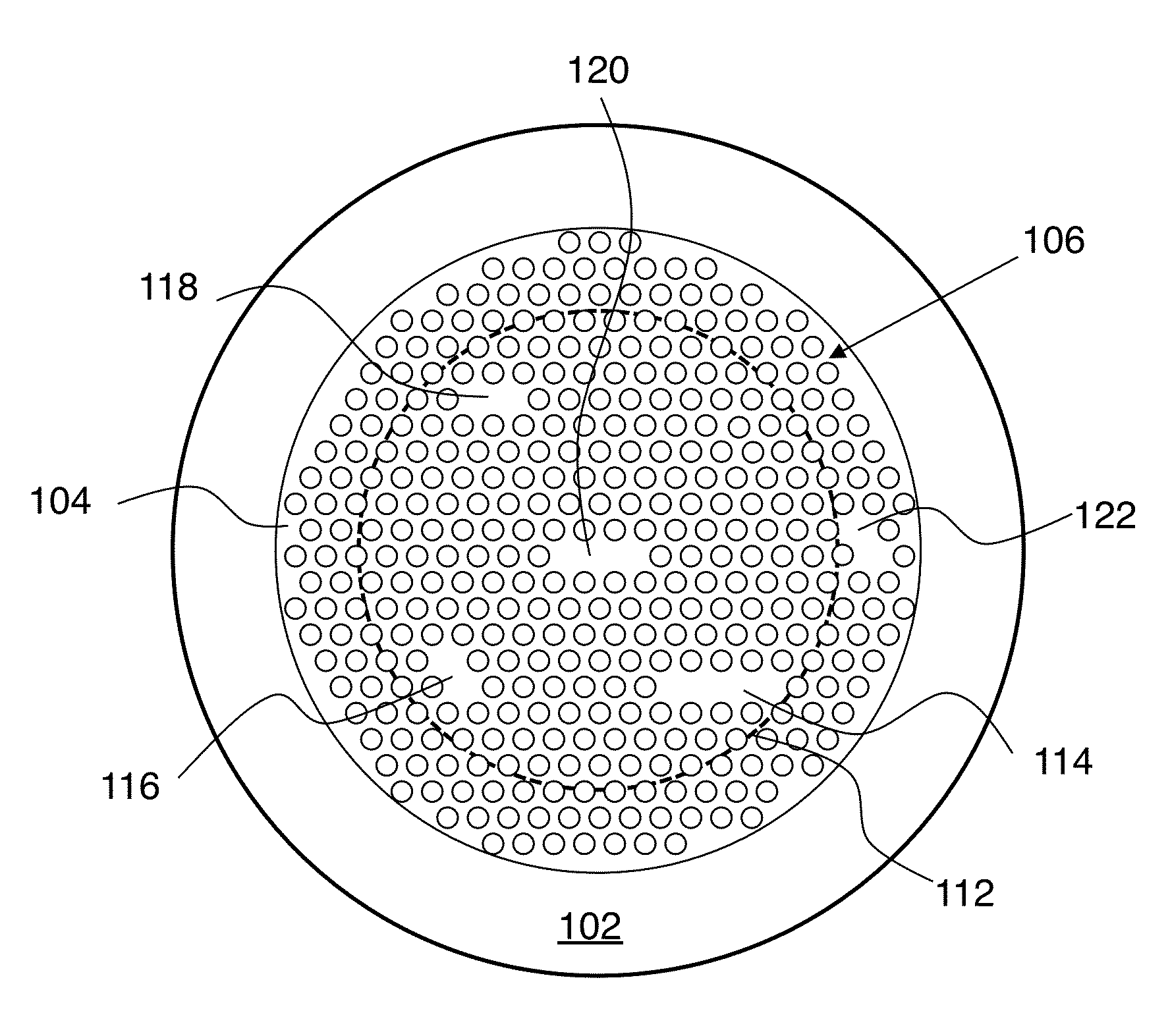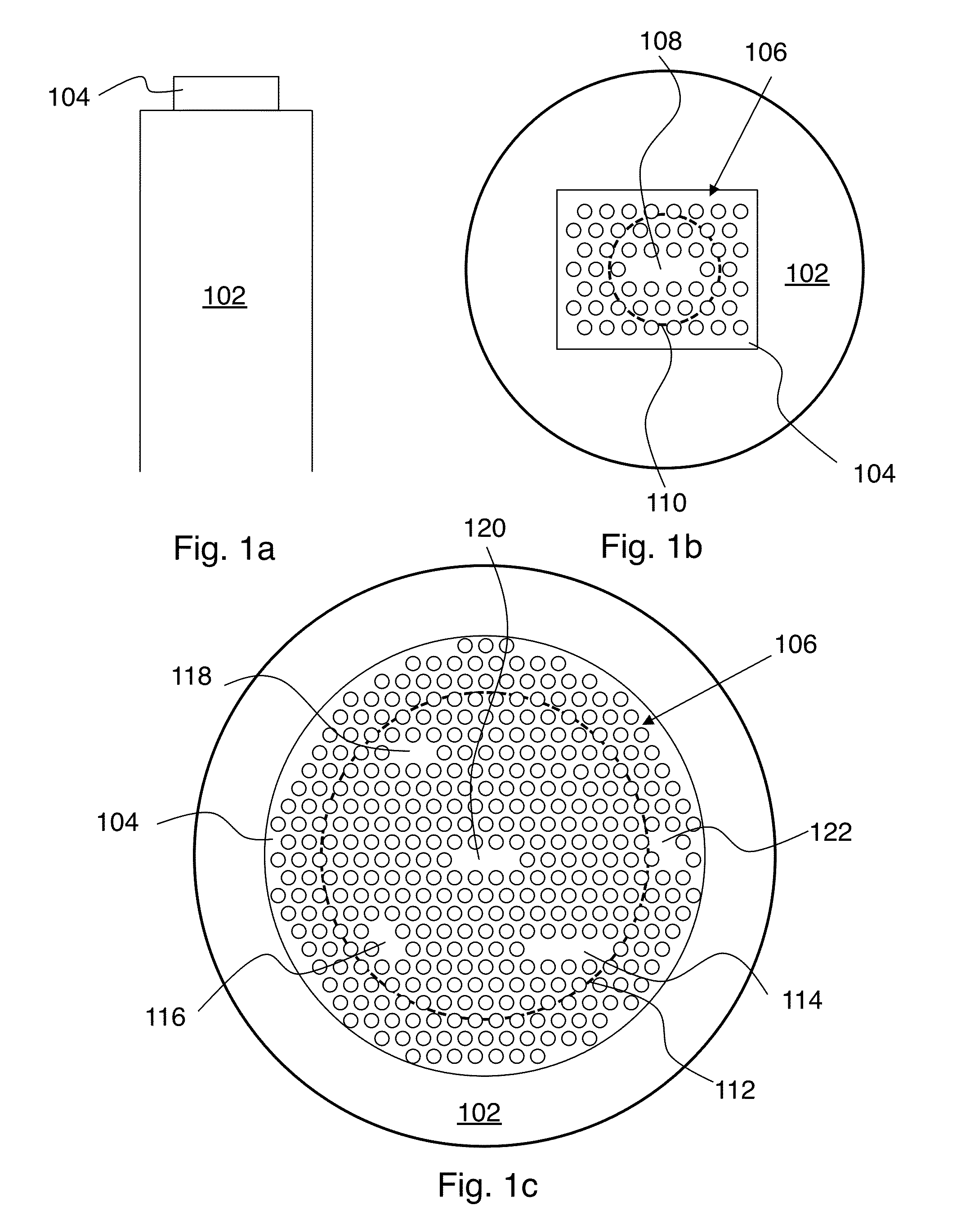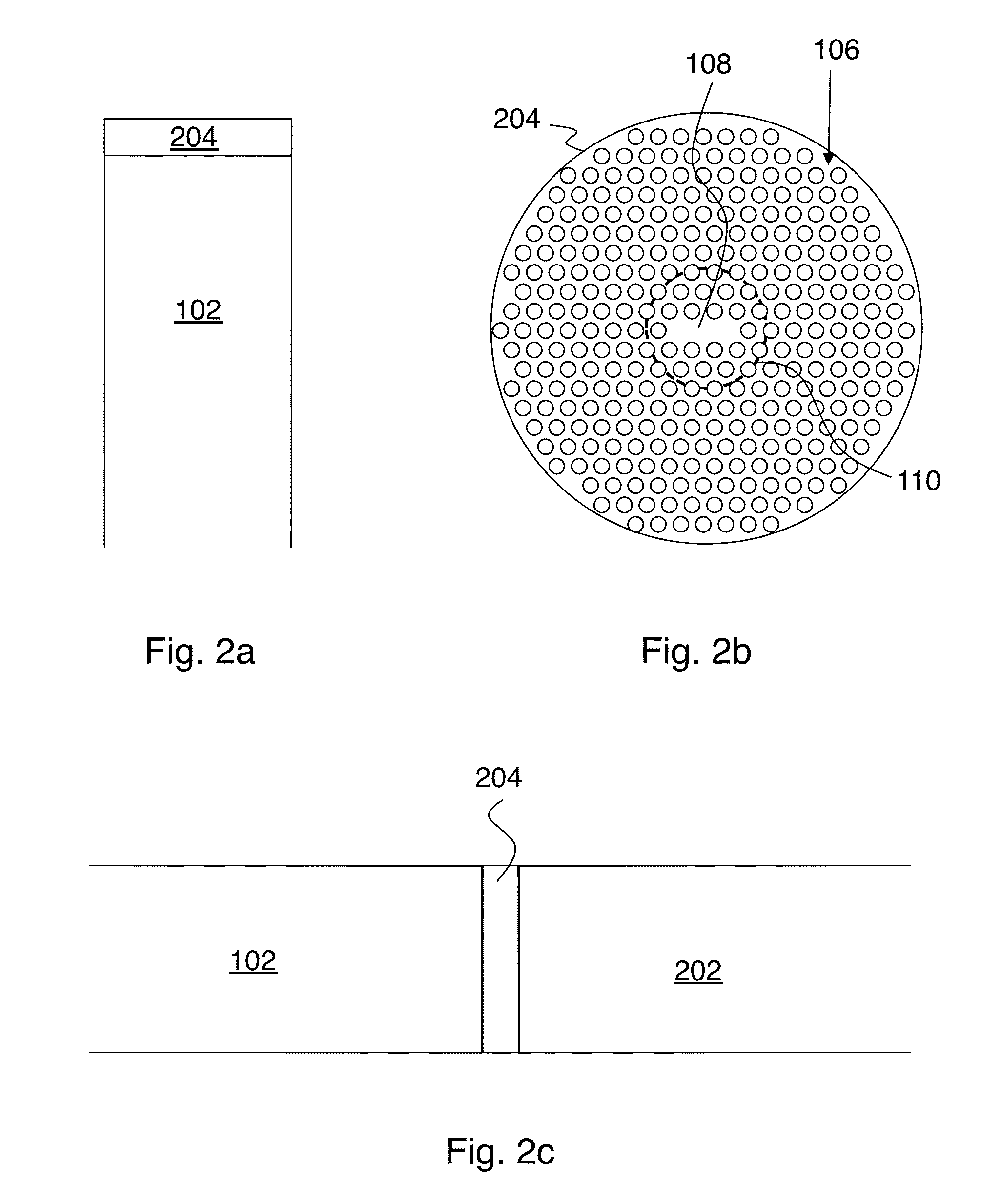Optical Fibers Functionalized with Photonic Crystal Resonant Optical Structures
a technology of optical fibers and photonic crystals, applied in the field of optical fibers functionalized with photonic crystal resonant optical structures, can solve the problems of difficult integration in large systems with many devices, difficult coupling of light on and off-chip, and no optical fiber has demonstrated functional cavities coupled to the tip of optical fibers, etc., to achieve simple and durable construction, tight space, and easy to mak
- Summary
- Abstract
- Description
- Claims
- Application Information
AI Technical Summary
Benefits of technology
Problems solved by technology
Method used
Image
Examples
Embodiment Construction
[0048]In this description, section A provides a description of principles relating to various embodiments of the invention, and section B describes some experimental results.
A) Principles
[0049]FIGS. 1a-c show some embodiments of the invention. FIG. 1a shows a side view and FIG. 1b shows a corresponding top view. Here a device 104 is affixed to an exposed end face of optical fiber 102. Device 104 includes at least one resonant optical structure (e.g., cavity 108) defined by a photonic crystal structure 106 in a semiconducting or dielectric material. Fiber 102 is optically coupled to cavity 108 (e.g., by providing a spatial overlap of the fiber core 110 and cavity 108). As described in detail below, device 104 is fabricated on a substrate distinct from fiber 102, and then transferred to fiber 102. FIG. 1c shows a variant. Here fiber core 112 overlaps with several cavities (114, 116, 118, 120), and cavity 122 does not overlap with the core. Instead, cavity 122 is aligned with the cladd...
PUM
| Property | Measurement | Unit |
|---|---|---|
| size | aaaaa | aaaaa |
| thick | aaaaa | aaaaa |
| diameter | aaaaa | aaaaa |
Abstract
Description
Claims
Application Information
 Login to View More
Login to View More - R&D
- Intellectual Property
- Life Sciences
- Materials
- Tech Scout
- Unparalleled Data Quality
- Higher Quality Content
- 60% Fewer Hallucinations
Browse by: Latest US Patents, China's latest patents, Technical Efficacy Thesaurus, Application Domain, Technology Topic, Popular Technical Reports.
© 2025 PatSnap. All rights reserved.Legal|Privacy policy|Modern Slavery Act Transparency Statement|Sitemap|About US| Contact US: help@patsnap.com



